2017 KCSE Woodwork Paper 1 Past Paper
Section A (40 marks)
Answer all the questions in this section in the spaces provided.
1 (a) State two advantages of water stains. (2 marks)
(b) State two disadvantages of spirit stains. (2 marks)
2 Name three types of saws in each of the following categories: (3 marks)
(a) Hand saws.
(b) Curve cutting saws.
3 (a) Explain the cause of each of the following timber defects: (2 marks)
(i) Heart rot
(ii) Knots
(b) List four types of glue used for veneering. (2 marks)
4 State four safety rules to observe when using a power drill to drill a hole in a piece of wood. (4 marks)
5 With the aid of a sketch, explain how the trueness of a try square is tested using a board and a straight edge. (4 marks)
6 With the aid of a labelled sketch, explain the ‘toenailing’ method of driving nails. (4 marks)
7 Figure 1 shows the blade of a Jack plane fitted in two different ways.
Figure 1
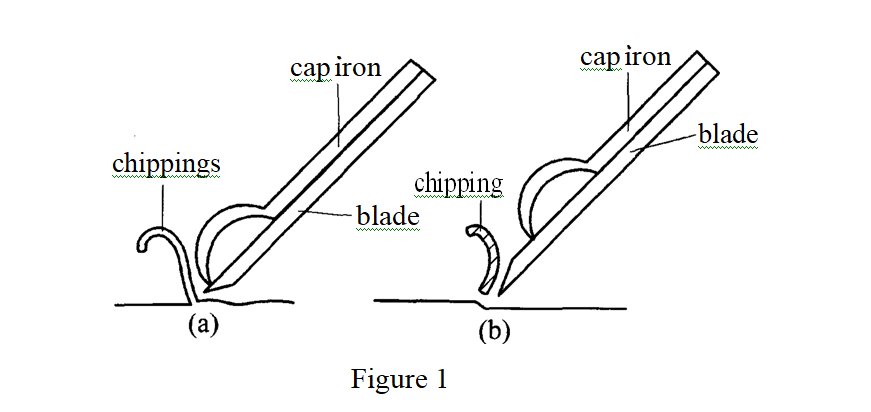
Explain the cutting effect in both cases. (4 marks)
8 (a) State four factors which may cause closure of a business. (2 marks)
(b) Sketch the following patterns of matching veneers. (2 marks)
(i) Diamond
(ii) Slip
9 With the aid of labelled sketches, illustrate two methods used to prevent a piece of wood from splitting at the end when drilling a hole. (4 marks)
10 Figure 2 shows a shaped block drawn in isometric projection.
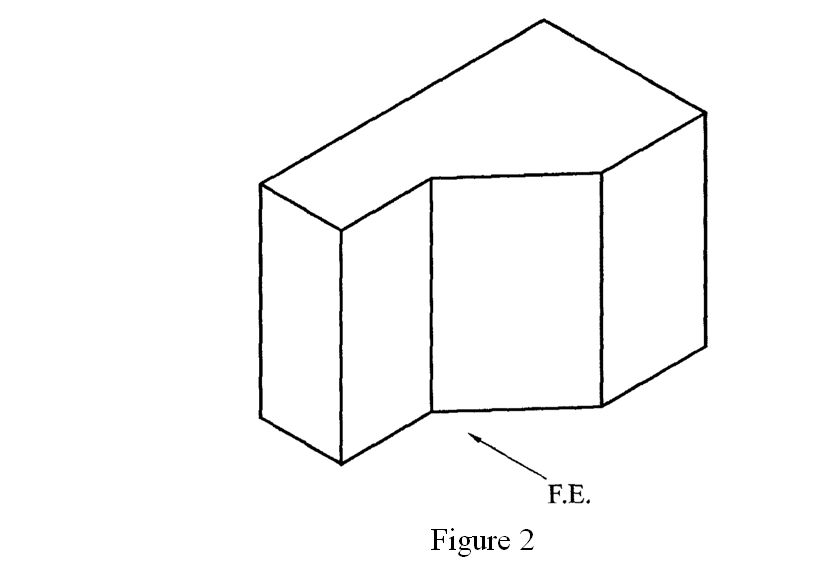
Sketch the three orthographic views of the block in third angle projection. (5 marks)
Section B (60 marks)
Answer question 11 on the A3 pal er and any other three questions from this section in the spaces provided.
Candidates are advised not to spend more than 25 minutes on question 11.
11 Figure 3 shows two views of a truncated square pyramid drawn in first angle projection.
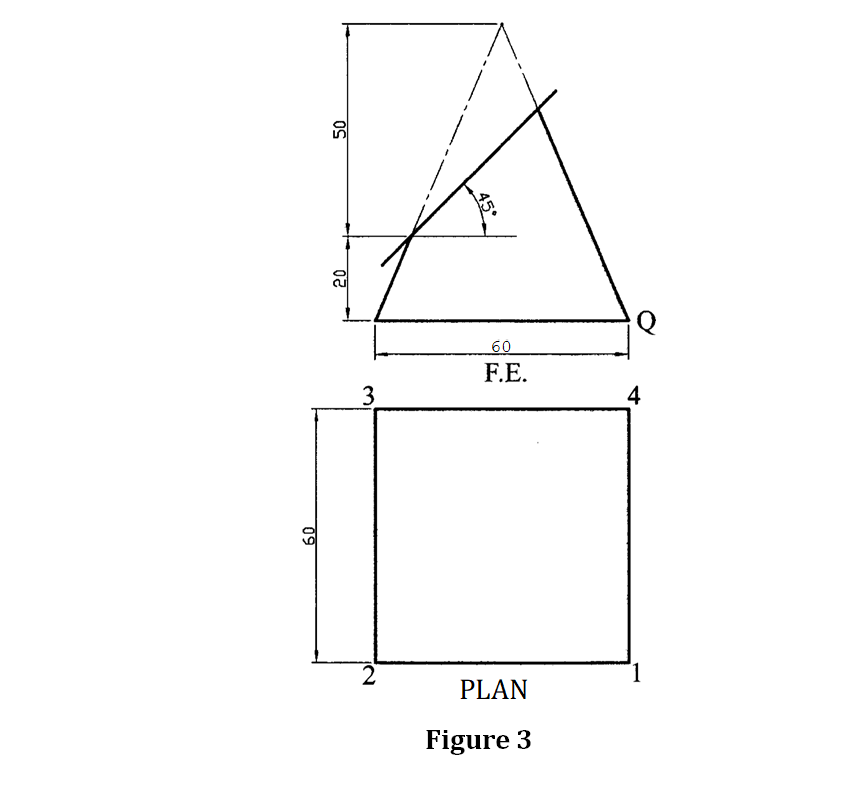
Copy the given views Full Scale and draw the following:
(a) Complete plan. (15 marks)
(b) True shape of the cut face.
(c) Development of the pyramid when opened along P-Q.
12 (a) Explain the following methods of laying veneers: (4 marks)
(i) Hammer veneering
(ii) Caul and press veneering
(b) Outline the procedure of shooting end grains of a piece of wood 50 X 100 mm using a bench plane and bench vice only. (5 marks)
(c) With the aid of sketches, describe the following timber defects:
(i) Twist
(ii) Bow
13 (a) Figure 4 shows boring tools labelled X and Y. (6 marks)
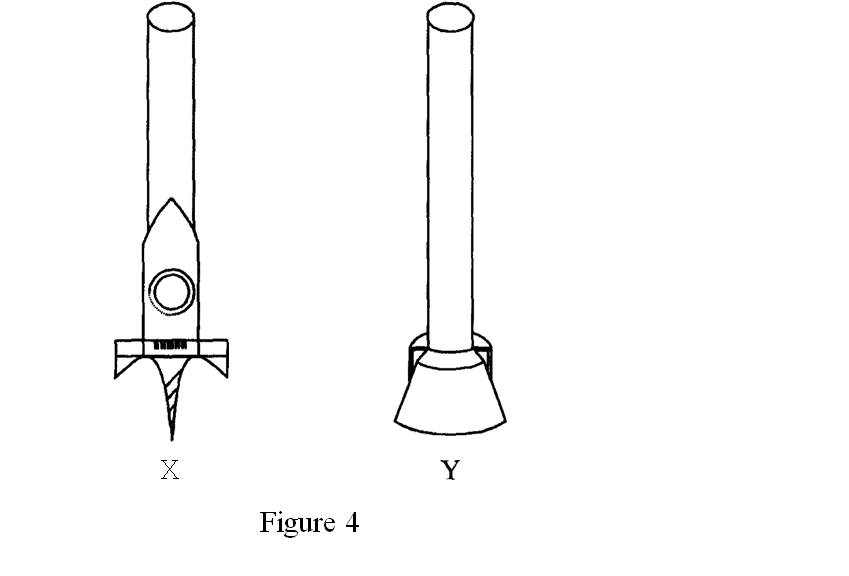
(i) Name the tools.
(ii) State one function of each of the tools in 13 (a) (i) above. (3 marks)
(b) Outline the procedure of sharpening the cutting blade of a Jack plane using an oil stone. (6 marks)
(c) Figure 5 shows a part of a bridle mitre joint.
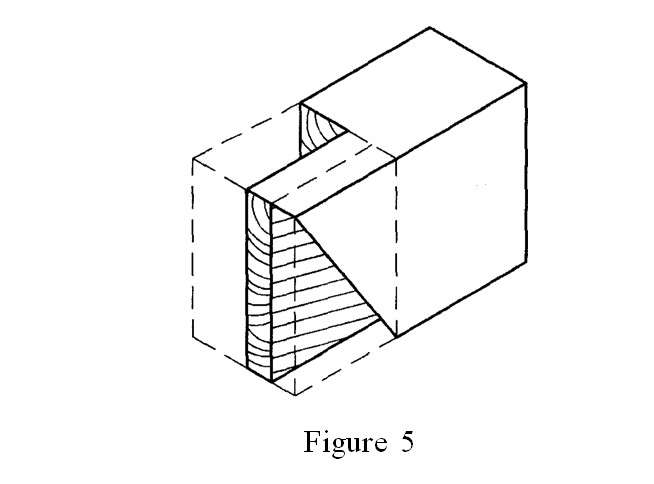
Outline the procedure of marking and cutting the joint. (6 marks)
14 (a) Explain the difference between the following terms, giving two examples in each case: (4 marks)
(i) Public sector
(ii) Private sector
(b) Figure 6 shows a device used in a wood workshop.

(i) Name the device.
(ii) Name the parts labelled A and B.
(iii) State the function of the device.
(iv) State two safety precautions to observe when using the device.
(c) State six safety precautions to observe when using a surface planer.
15 (a) Using pictorial sketches, show the difference between square and secret haunch tenon.
(b) Figure 7 shows three views of a kitchen stool.
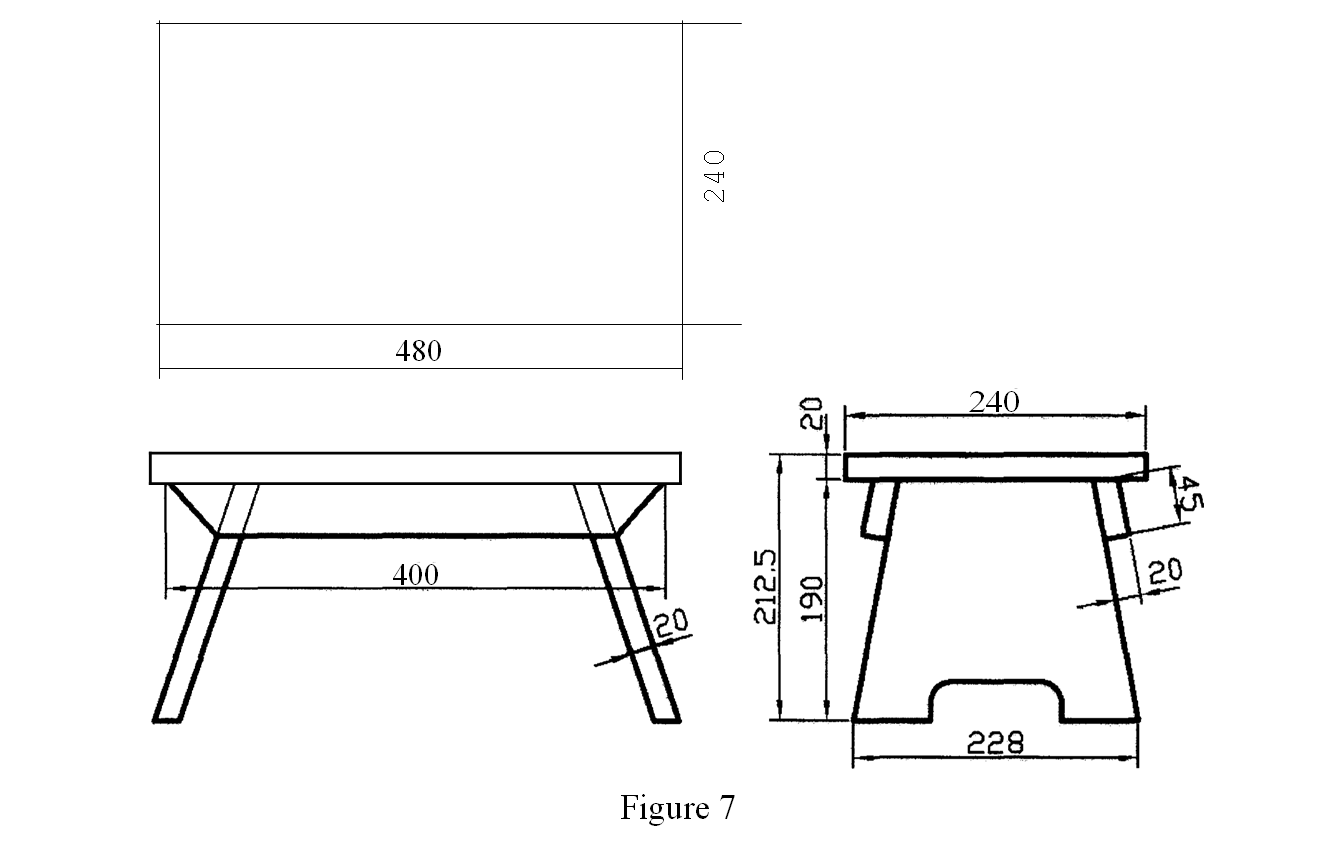
Given the following information:
Timber 250 X 25 mm — Ksh 100 @ 300 mm
50 X 50 mm — Ksh 60 @ 300 mm
Nails 38 mm long — Ksh 120 @ 1 kg
Sandpaper Ksh 20 @ sheet
Allow 35% profit and overheads.
NB/minimum timber lenth sold — 150 mm
(i) Prepare a cutting list for the materials required.
(ii) Calculate the cost of making the stool. (12 marks)
2017 KCSE Woodwork Paper 1 Past Paper-Marking Scheme/Answers
2017 Woodwork – Paper 1
1. (a) Advantages of water stain Penetrates the wood deeply — fade resistant. Not necessary to seal water stains. Takes away type of finish. It is cheap. It easy to mix thus come up with a certain colour. Not inflammable. Any 2 x 1 =
2 marks
(b) Disadvantages of spirit stains Susceptible to fading. They are expensive. They are highly flammable Difficult to apply with a brush. May show overlapping brush marks. Any 2 x 1 = 2 marks
2. (a) Hand saws
– Tennon saws, dovetail saws, backsaw, rip saw, cross-cut saw, panel saw. Any 3
(b) Curve cutting saw Bow saw, coping saw, fret saw, compass saw, key hole saw. A
3. (a) (i) Heart rot
Decay caused by fungi near the heart of the living tree, it includes the pith and some of the true wood.
(ii) Knots
Occurs when a branch or a limb is cut through during the growth of the tree.
(b) Types of glue used for veneering;
– Animal glue – Synthetic resin
Casein glue – Contact or/impact adhesive Polyvinyl Acetate (PVA)
Safety when using power drill: Do not use switch box when hand drilling. Make sure the job is secure and over a block. Make sure the drill bit and chuck is securely tightened. Allow the motor to attain full speed before commencing drilling. Back the drill bit out of the hole frequently to remove chips. Always drill away from the body.

Place the square against and edge known to be straight and mark a line.
Then turn the square over. Any inaccuracy will show as a divergence of the line and the blade.
6.

Toenailing is a method of driving nails, used when the end of the board meets the face of another board.
It is advisable to always stagger the nails and angle to avoid nails hitting one another.
7. The cap iron is fitted close to the cutting edge and the cutting iron is fitted with the beveled edge against the stock.
This correct positioning of the cutting iron allows the shaving to immediately bend and break resulting in clean cuts.
The cap iron is fitted on the beveled side of the cutting iron.
The shavings elongate and rip out of the surface of the board as opposed to being bent and broken resulting in rough cuts.
( a) Factors that may cause closure of a business: Lack of materials. Lack of business premises. Lack of expertise. Lack of appropriate legal certificates. Lack of appropriate infrastructure.
b Patterns of matching veneers.

(a) Boring from one side until the screw appears and then reversing the auger bit.
(b) Using a piece of scrap stock to bore directly through the work.


12. (a) (i) Hammer veneering
A method of laying veneers when a veneer hammer is used to press the veneers into close contact with the core and squeeze out excess glue and air bubbles.
(ii) Caul and press veneering
The veneers are pressed into close contact with the glued core by means of cauls with bearers and cramps or mechanical press.
(b) Procedure of shooting end grain
Mark the required true end.
Firmly squeeze the stock against the chosen tail with one hand about 1mm projecting over the bed. Lie the bench plane flat on its side pressed against the base. Thrust the plane forward along the stock to cut off the 1mm. Finish the end to the marked line.
(c) (i) Twist
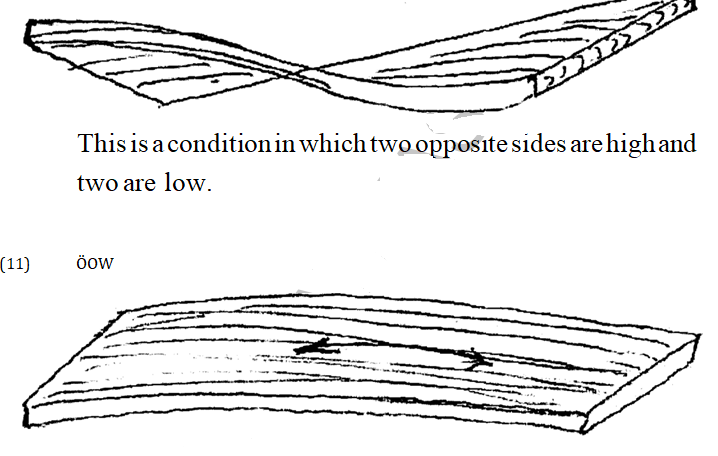
This is a distortion along the length of the board, leaving one face with grain concave and the other face convex.
13. (a) (i) names or bits
x — Expansive bit
y — Forstner bit
(ii) Expansive bit
Used for boring holes of varying diameters in softwood.(1)
Forstner bit
Drills an accurate flat bottomed hole I.
(a). procedure of sharpening the cutting tilade or a jack plane using an oilstone Mount the oil stone in a holder to keep it stationary. Place the beveled portion of the cutting edge flat on a medium oilstone. Move the blade in a figure eight or long oval pattern. Remove the wire edge placing the blade flat against the oilstone and moving in a circular motion. Use a fine oilstone to further hone the edge. Test the blade for sharpness by making a slicing cut on a scrap board.
Procedure of marking and cutting
1 — Measure and mark the length of tennon using a pencil and try square.
2 — Divide the width of the piece into 3 equal parts and draw the lines to the length mark.
3 — Mark one face of the tennon using a try square.
4 — Turn to the other face and mark the mitre with the bevel square.
5 — Cut the face marked square and remove the waste.
6 — Cut the mitre and remove the waste.
(i) ruolic Sector:
These are government owned organizations which provide services to the public.
Examples: – Government ministries Government agencies The military The National Police Service e.t.c.
(ii) Private Sector
These are organizations that are privately owned and not part of government.
Examples: – Private corporations
– Partnerships
– Sole business e.t.c
(b) (i) Name of device
Cutting gauge,cutting board/mitre template
(ii) Name of parts
A — Stock
B — Adjustable stopper
(iii) Used when cutting many pieces of equal length.
(iV) Safety precautions to observe:
(i) Ensure that the device is held firmly on the working bench.
(ii) Ensure that cutting is along the slot.
(iii) Hold the stock firmly to avoid vibration.
(c) Safety precaution to be observed while using a surface planes.
Ensure no loose parts before you switch on the machine.
Remove all loose knots from the stock before surfacing. Do not surface a stock less than 300mm long. Never stand directly behind a board being surfaced. (stock could kick back). Make sure one face is flat before you surface a board. Do not adjust the tables when the machine is on. Always use a push block. Feed the stock along the grain.
15. (a)



